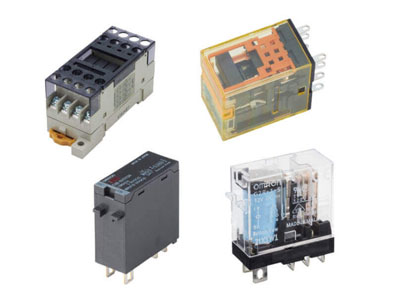Key Takeaway
To choose a relay, start by identifying the purpose of the relay and its application. Check the voltage and current ratings to ensure the relay can handle the minimum voltage required and any current fluctuations. Consider the size to ensure it fits your application. Evaluate switching speed and frequency to match how often and how quickly the relay needs to switch. Assess mechanical durability and surge current durability to ensure longevity and the ability to handle spikes.
Consider the operating environment for harsh conditions, ensure isolation between control and load circuits for safety, and determine if multiple contacts are needed for controlling more than one circuit. Finally, check the contact material for conductivity and durability, and the operating time for the relay to switch states.
Determining Load Requirements
The first step in choosing a relay is determining the load requirements. Identify the type of load the relay will control, whether it’s inductive, resistive, or capacitive. Inductive loads, such as motors and transformers, require relays that can handle inrush currents and potential spikes. Resistive loads, like heaters and lights, have a steady current draw, making them easier to manage. Capacitive loads, found in applications like power supplies, need relays that can cope with initial high currents. Understanding the nature of the load helps in selecting a relay that can handle the specific demands, ensuring long-term reliability and performance.

Current and Voltage Ratings
When selecting a relay, it is crucial to consider its current and voltage ratings to ensure safe and reliable operation. These ratings must match or exceed the requirements of your application. For example, if you need to switch a 10A, 120V AC load, you should choose a relay rated for at least 10A at 120V AC. Using a relay with insufficient ratings can result in failure and potential damage to your system. Always refer to the datasheet for precise current and voltage ratings and include safety margins to accommodate transient spikes or surges. Properly matching these ratings ensures the relay operates within its limits, preventing overheating and premature wear. By ensuring the relay’s ratings align with your application’s demands, you guarantee the longevity and efficiency of your electrical system.
Environmental Considerations
Environmental conditions are a significant factor in relay selection. Consider variables such as temperature, humidity, and exposure to dust or corrosive elements. For harsh environments, choose relays with appropriate sealing and protection ratings, like IP ratings, to prevent dust and moisture ingress. High-temperature applications require relays designed to operate at elevated temperatures without degradation. In high-humidity environments, relays with anti-corrosion features are essential. By selecting a relay that can withstand the specific environmental conditions of your application, you ensure consistent performance and longevity. For example, in an outdoor industrial setting, a relay with a high IP rating will resist dust and water, while in a factory with high heat, a high-temperature-rated relay will maintain reliability. Tailoring the relay choice to environmental demands is crucial for maintaining system integrity and operational efficiency.
Relay Types
Understanding the various types of relays is crucial for selecting the right one for your specific application. Electromechanical relays are the most common, known for their versatility, high current handling, and durability. They use a physical moving contact to open and close circuits, making them suitable for applications requiring substantial current loads, such as industrial machinery and automotive systems.
Solid-state relays (SSRs), on the other hand, use semiconductor components to switch circuits, providing faster switching speeds and longer lifespans compared to electromechanical relays. SSRs are ideal for lower current applications where rapid switching and high reliability are essential, such as in precision electronics and automation systems.
Reed relays, known for their high-speed switching and low power consumption, use magnetic fields to operate reed switches. These relays are excellent for applications requiring fast response times, like in telecommunications and signal switching.
Latching relays maintain their state without continuous power, making them ideal for power-efficient applications. Once set or reset, they retain their position, which is beneficial in battery-operated devices and memory circuits.
Choosing the correct type of relay depends on understanding the unique requirements of your application, such as current load, switching speed, and power efficiency. By matching the relay type to your specific needs, you ensure optimal functionality and efficiency in your electrical systems.
Manufacturer Specifications
Consulting manufacturer specifications and datasheets is essential when choosing a relay. These documents provide detailed information about the relay’s electrical characteristics, mechanical properties, and recommended applications. For instance, specifications will detail the relay’s voltage and current ratings, ensuring you select a relay that can handle the electrical load of your specific application.
Additionally, these datasheets include crucial details such as contact material, which affects conductivity and wear resistance, coil resistance, which impacts the relay’s power consumption, and mechanical endurance, indicating the relay’s lifespan under typical operating conditions. Certifications and compliance with industry standards, such as ISO and UL, are also listed, providing assurance of the relay’s quality and reliability.
By comparing these specifications across different models and manufacturers, you can make an informed decision. For example, if you need a relay for a high-vibration environment, you might prioritize one with robust mechanical endurance and suitable certifications. Understanding and leveraging manufacturer specifications helps ensure that you choose a relay that meets all technical requirements and offers optimal performance and longevity in your application. This meticulous approach to selection enhances the reliability and efficiency of your electrical systems, providing a solid foundation for both routine operations and complex tasks.
Conclusion
Selecting the right relay involves careful consideration of load requirements, current and voltage ratings, environmental factors, relay types, and manufacturer specifications. By thoroughly evaluating these aspects, you can choose a relay that ensures safe, reliable, and efficient operation in your electrical system. For newly joined engineers, understanding these criteria is essential for designing and maintaining robust control systems. Mastering the art of relay selection not only enhances system performance but also contributes to overall operational safety and efficiency.
